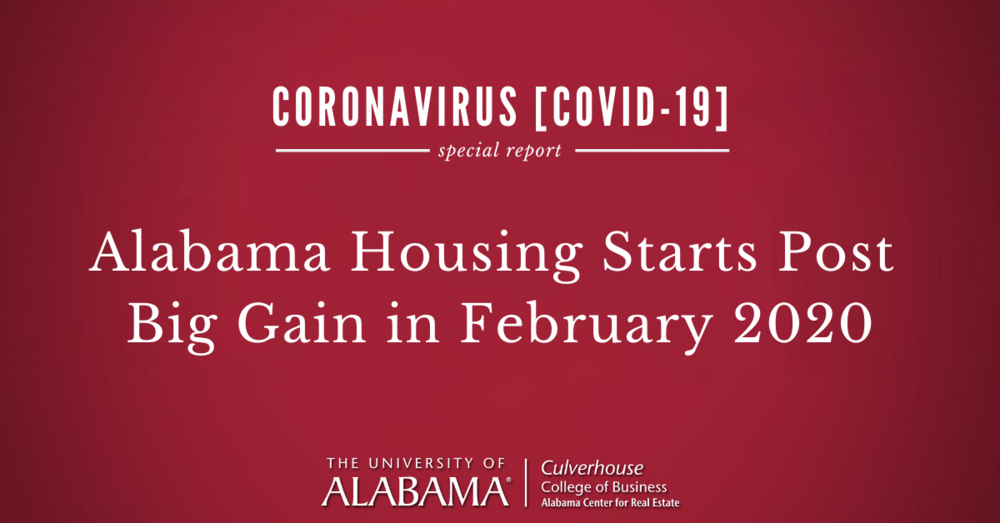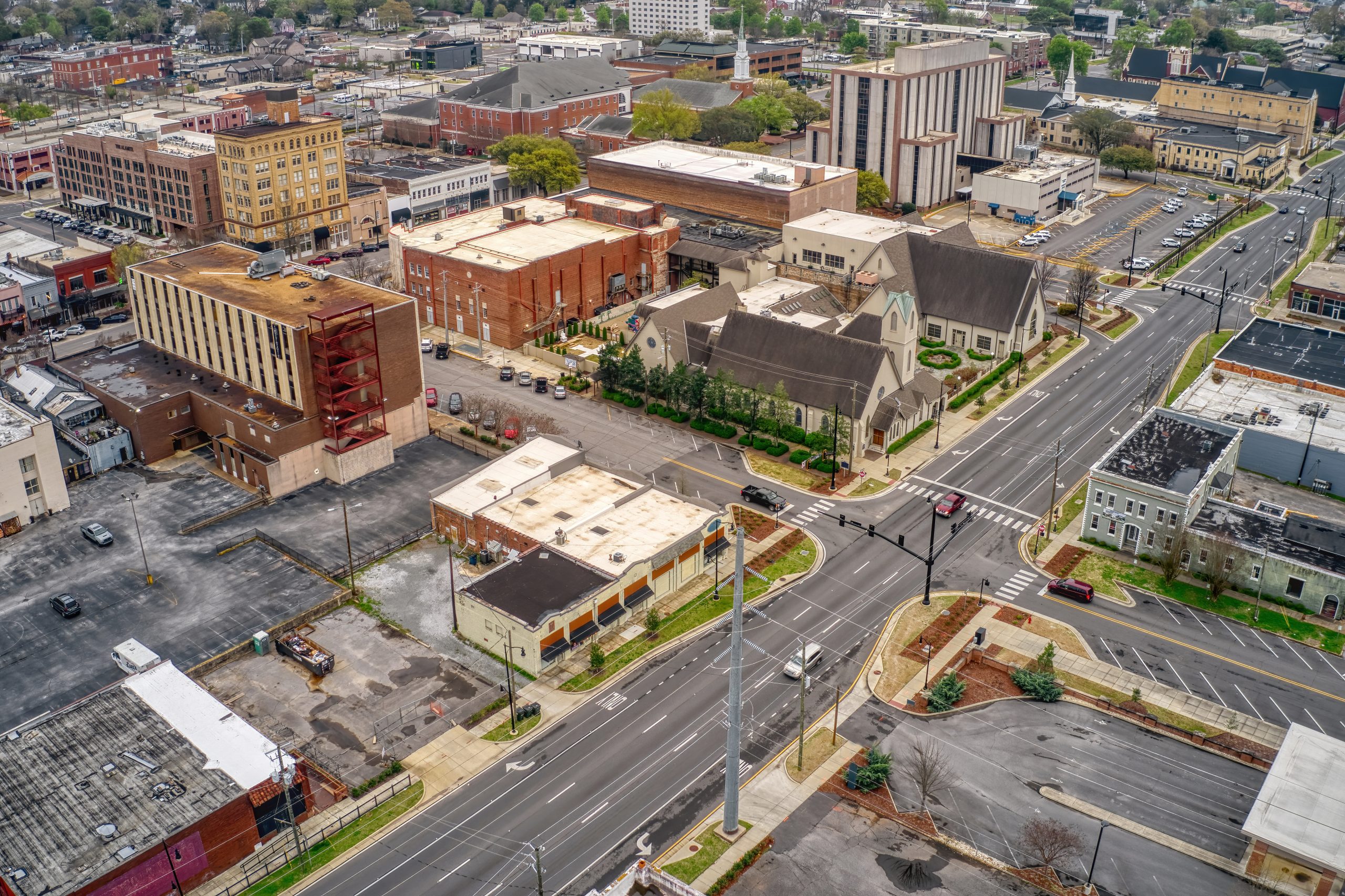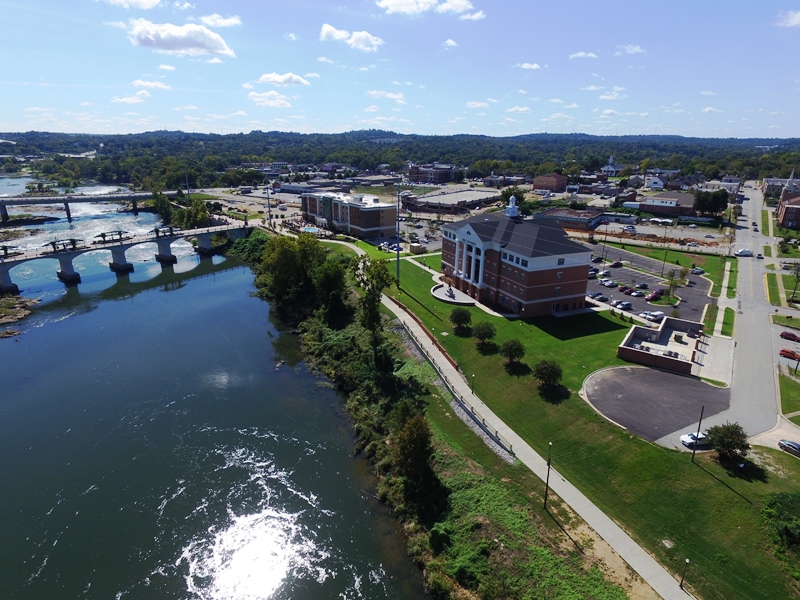Based on large year-over-year permit gains in January and February, housing starts are off to a fast start, yet uncertainty surrounding the COVID-19 pandemic clouds the forecast somewhat. Although many projects currently underway are likely to continue towards completion, there is some uncertainty about the long-term impact. March and April permit numbers are especially important this year as they will reflect builder’s operational plans while many other sectors of the economy slow down or even grind to a halt.
Housing starts are up big year-to-date in the United States (18.7%), South region (18.5%), and Alabama (23.2%). New construction markets had plenty of momentum coming into 2020 thanks to permit growth in the last months of 2019. Now, however, the focus has shifted to the months ahead as businesses, including homebuilders and material suppliers, adapt to doing business in the coronavirus era. Fortunately for homebuilders, tradesmen can continue to work while many other non-essential remain home.
K.C. Conway, ACRE’s director of research and corporate engagement, says home construction projects are moving forward as planned. “First, demand for new inventory was pent up prior to COVID-19 and will likely shift to the fall. Second, banks can’t just pause construction loans and commitments without a slew of accounting and bank regulatory issues like classifying a loan as non-performing or a TDR (Troubled Debt Restructure). And finally, supply-chain disruption (think building supplies, fixtures, and hardware from China). Add to that a more drawn out closing processes (hard to get inspections, permits, appraisals, title reports, etc.) are going to delay the delivery cycle. This alone may be sufficient to get us past “Shelter-in-Place” orders through April or May.”
In Alabama, Birmingham-Hoover’s new construction market is off to a fast start as housing starts are up 29% YTD. Most of the construction is in Hoover, Trussville, and Vestavia Hills, which have continued to grow through the years thanks to great schools and high overall quality of life. Many of the cities in the MSA are landlocked, while a few others have room for growth. Unique infill projects, a growing trend in recent years as the last bits of land are developed, are likely to continue in the coronavirus era. As land becomes increasingly scarce in Mountain Brook and Homewood (and other high demand areas) new development is likely to proceed, especially as infill, even during a potential economic downturn.
Low interest rates are likely to continue, which incentivize developers to build, generally speaking. The Trussville corridor, for example, is home to continued development since the 1950s. It is well served by interstate, has land to grow, is convenient to major employers, has ample retail and support services, all contributing towards a solid base for future residential development. The high-quality schools are supported by higher than average (for AL) property taxes, but are still very reasonable when compared to other states. Communities around the Birmingham-Hoover MSA and throughout the state/nation have used a similar formula to create a high quality of life for citizens.
An uncertain future lies ahead with the COVID-19 pandemic. Hopefully the curve will flatten by the summer months and we can return to our former lifestyles, largely built around social interaction. However, the outlook remains positive for the construction industry, all things considered. Check back later in the month for March housing starts data, which will reflect homebuilder sentiment during the first month of the coronavirus era.





